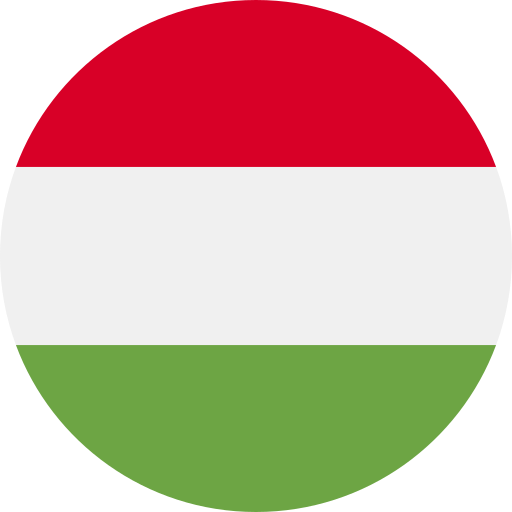Key Takeaways
- Unique Language Family: Hungarian, or Magyar, belongs to the Uralic language family, distinguishing it from most European languages that are primarily Indo-European.
- Historical Influences: The language’s development was shaped by interactions with neighboring tribes and cultures, including Slavs, Germans, Turks, and Arabs throughout its history.
- Key Historical Events: Significant events such as the establishment of Hungary as a Christian kingdom and the 19th-century linguistic renaissance played crucial roles in shaping Hungarian identity and language.
- Standardization Efforts: The 19th century saw efforts to standardize Hungarian grammar and vocabulary, which contributed to increased literacy rates and national pride among speakers.
- Linguistic Complexity: Modern Hungarian features vowel harmony and an agglutinative structure that allows for extensive word formation through prefixes and suffixes.
- Cultural Significance: Today, approximately 13 million speakers use Hungarian worldwide; the language serves not only as a means of communication but also as a vital part of Hungary’s cultural identity.
Ever wondered how the Hungarian language evolved into the unique tongue it is today? Understanding the historical background of the Hungarian language unlocks a fascinating journey through time, revealing influences from various cultures and peoples.
From its mysterious origins to its development amid shifting empires, this language tells a story that’s rich and complex. You might be surprised to learn how ancient tribes and modern political changes shaped what you hear today in everyday conversations. Dive into this exploration, and discover not just words but the very essence of Hungary’s identity woven through centuries of history.
Overview of Hungarian Language
Hungarian, known as Magyar, belongs to the Uralic language family. This unique classification sets it apart from most European languages, which primarily belong to the Indo-European family. The roots trace back thousands of years, with influences from various cultures and migrations.
The first significant historical record dates back to the 9th century when the Magyars settled in the Carpathian Basin. Over time, they interacted with neighboring tribes and nations, including Slavs and Germans. These interactions enriched the Hungarian vocabulary and contributed to its distinctive phonetics.
During the Ottoman Empire’s rule in Hungary (16th-17th centuries), Turkish words entered everyday usage. This period also introduced a number of Arabic terms into Hungarian. As Habsburg rule followed in the late 17th century, German influence became prominent in both vocabulary and administrative language.
The 19th century marked a linguistic renaissance for Hungarian. Efforts led by linguists aimed at standardizing grammar and expanding literary expression occurred during this time. The emergence of national identity fueled pride in using Hungarian over foreign languages.
Today, approximately 13 million speakers use Hungarian worldwide, predominantly within Hungary but also among communities in surrounding countries like Romania and Slovakia. Despite its complexities—such as vowel harmony and agglutinative structure—Hungarian continues to thrive as a symbol of cultural identity.
Cultural expressions through literature, music, and media maintain its relevance even amid globalization pressures. You’ll find that understanding this rich linguistic history offers insights not only into language learning but also into Hungary’s vibrant culture itself.
Origins of the Hungarian Language
The Hungarian language, or Magyar, boasts a rich and complex history. Its origins trace back to the Uralic language family, setting it apart from most European languages that belong to the Indo-European family.
Uralic Language Family
Hungarian is part of the Finno-Ugric branch of the Uralic language family. This classification connects it with Finnish and Estonian, among others. Characteristics such as vowel harmony and agglutination define its unique structure. Vowel harmony ensures that vowels within a word harmonize in terms of frontness or backness, while agglutination allows for extensive word formation through prefixes and suffixes. These features contribute to its distinctiveness in Europe.
Historical Migration Patterns
The historical migration patterns of the Magyars played a crucial role in shaping Hungarian. In the late 9th century, they settled in the Carpathian Basin after migrating from Central Asia. Interactions with various tribes like Slavs and Germans enriched their vocabulary significantly. For instance, numerous words derived from these neighboring cultures entered everyday usage, demonstrating how migration influenced linguistic evolution.
Furthermore, during Ottoman rule in the 16th century, Turkish terms found their way into Hungarian. The subsequent Habsburg Empire brought German influences that further diversified its lexicon. Each wave of influence added layers to an already intricate linguistic tapestry.
Understanding these origins highlights not just where Hungarian comes from but also how it’s evolved over centuries through cultural exchanges and historical events. This fascinating journey continues today as approximately 13 million speakers navigate this beautiful language filled with depth and heritage.
Development Through the Ages
The Hungarian language, known as Magyar, reflects a rich tapestry of historical influences. Understanding its development offers insights into how it has evolved over centuries.
Influence of Neighboring Languages
Hungarian’s proximity to various cultures led to significant linguistic exchanges. As Magyars settled in the Carpathian Basin during the 9th century, they interacted with Slavic and Germanic tribes. This contact introduced numerous loanwords into Hungarian vocabulary. For example, terms for everyday objects and concepts often stem from these interactions, showcasing how languages borrow elements to enrich themselves.
During Ottoman rule in the 16th century, Turkish and Arabic words also permeated Hungarian. You’ll find terms related to food, clothing, and administration that highlight this influence. Similarly, the Habsburg era brought in more German words due to political domination and cultural integration. The fluidity between languages illustrates how Hungarian adapted over time while retaining its unique characteristics.
Key Historical Events Impacting Language
Several key events shaped the trajectory of the Hungarian language throughout history. The establishment of Hungary as a Christian kingdom in 1000 AD marked a turning point; Latin became prominent for official documents and education but didn’t overshadow Magyar’s growth.
The Reform Era in the 19th century ignited a passion for national identity through language standardization efforts. Scholars worked tirelessly on grammar rules and literature production aimed at fostering pride among speakers. This period cemented Hungarian’s status within Europe despite being distinct from surrounding Indo-European languages.
Political changes continuously impacted language usage as well. Wars and regime shifts often altered educational policies about teaching languages or promoting specific dialects within Hungary’s borders. Each chapter added complexity while shaping contemporary understanding and use of Magyar today.
These layers of influence reflect not just linguistic evolution but also cultural identity development across generations—an ongoing story that continues to unfold.
Modern Hungarian Language
Modern Hungarian, or Magyar, reflects a rich tapestry of historical influences and linguistic evolution. Today, it’s the primary language spoken by about 13 million people worldwide. This vibrant language showcases its unique character through various features that set it apart from many other European languages.
Standardization of the Language
Standardization of Hungarian began in earnest during the 19th century, coinciding with the rise of national consciousness among Hungarians. Linguists and scholars sought to create a uniform standard for education and literature, which led to increased literacy rates. The introduction of grammar books and dictionaries standardized spelling and pronunciation, ensuring consistency across regions. Efforts also aimed at preserving regional dialects while promoting a cohesive national identity through language.
Current Linguistic Features
Hungarian boasts distinct linguistic features that contribute to its complexity and beauty. Vowel harmony plays a significant role; vowels within a word harmonize according to frontness or backness, affecting suffixes attached to them. Agglutination is another hallmark; it allows for extensive inflectional forms by adding prefixes and suffixes, creating words that convey nuanced meanings with ease.
The vocabulary comprises numerous loanwords reflecting Hungary’s diverse history—words borrowed from Turkish during Ottoman rule, German from Habsburg influence, and Slavic terms due to geographical proximity enrich everyday speech. These aspects make modern Hungarian not just a means of communication but also an essential part of cultural identity.
By understanding these elements, you can appreciate how modern Hungarian has evolved while remaining deeply connected to its past—a living testament to Hungary’s journey through history.
Conclusion
Hungarian stands as a remarkable testament to the resilience and evolution of language. Its journey from the mysterious Uralic roots to its modern form reflects centuries of cultural exchange and adaptation. You can appreciate how historical events, migrations, and interactions have enriched its vocabulary and structure.
Today, Hungarian is more than just a means of communication; it embodies the spirit and identity of Hungary. As you explore this unique language, remember that each word carries with it echoes of history, culture, and an enduring connection to the past. Embrace the complexity and beauty that make Hungarian truly one-of-a-kind among European languages.
Frequently Asked Questions
What is the origin of the Hungarian language?
Hungarian, or Magyar, belongs to the Uralic language family, specifically the Finno-Ugric branch. Its origins are somewhat mysterious, distinguishing it from most European languages that are part of the Indo-European family.
How has history influenced the Hungarian language?
The history of Hungary, including migrations and interactions with neighboring tribes like Slavs and Germans, has significantly enriched its vocabulary. The Ottoman Empire and later Habsburg rule introduced Turkish, Arabic, and German terms into everyday use.
What are some unique features of modern Hungarian?
Modern Hungarian features vowel harmony and agglutination. It also incorporates many loanwords from Turkish, German, and Slavic languages due to historical influences that shaped its development over time.
When did significant records of Hungarian first appear?
Significant records of the Hungarian language date back to the 9th century when the Magyars settled in the Carpathian Basin. This period marked crucial linguistic exchanges with surrounding cultures.
How did political changes affect the Hungarian language?
Political changes have continuously impacted language usage in Hungary. Events like wars and regime shifts influenced educational policies and promoted efforts toward standardization which shaped contemporary understanding of Magyar.
Why is standardization important for modern Hungarian?
Standardization began in the 19th century alongside a rise in national consciousness. It helped increase literacy rates and created consistency across regions while preserving regional dialects essential for cultural identity.
How many people speak Hungarian today?
Approximately 13 million people speak Hungarian worldwide today. While primarily spoken in Hungary, it is also used in surrounding countries such as Romania and Slovakia.







